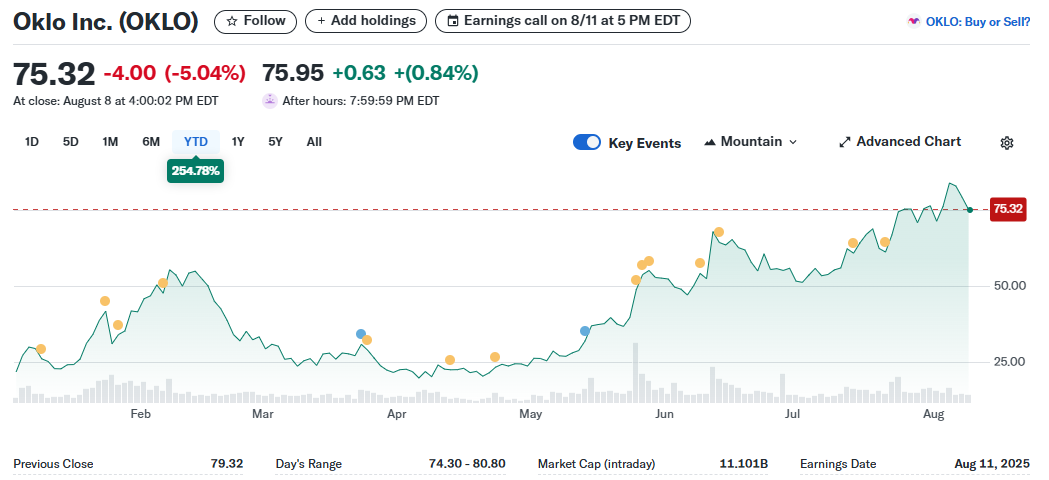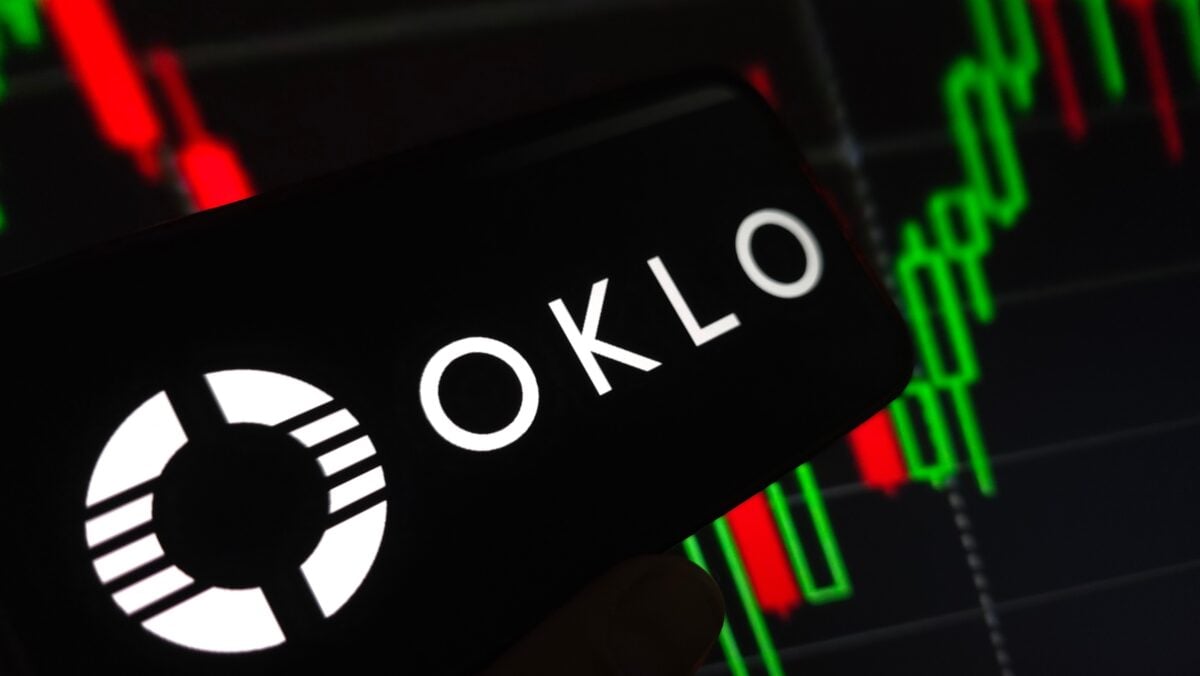TLDRs:
Contents
- AI-driven demand for clean, round-the-clock energy fuels a sharp rise in Oklo’s share price this year.
- Nuclear power attracts tech giants seeking reliable energy for data centers despite long build timelines.
- TerraPower secures $650M in funding as nuclear startups claim nearly a quarter of climate tech VC capital.
- Geothermal energy sees policy boosts, but cost and scaling challenges limit short-term AI-related growth.
A surge in artificial intelligence adoption is reshaping the U.S. clean tech investment landscape, with nuclear energy emerging as a surprising winner.
Oklo (NASDAQ: OKLO), a California-based nuclear startup, has seen its stock skyrocket by 254% in 2025 as tech companies rush to secure stable, carbon-free power sources for energy-hungry AI data centers.
Once considered niche, nuclear and geothermal firms are now at the center of investor attention. The renewed focus is driven by the fact that AI workloads require continuous, high-capacity electricity , a need that intermittent renewables alone struggle to meet.

Big Names, Big Capital, Bigger Ambitions
According to BloombergNEF (BNEF), almost 25% of U.S. climate tech venture capital funding in the first half of 2025 went to nuclear startups.
One of the biggest winners was Bill Gates–backed TerraPower, which closed a $650 million round to accelerate its small modular reactor projects.
Bloom Energy (NYSE: BE), a provider of solid oxide fuel cells, has also benefited from the AI-powered energy rush, posting a 66% rise in share price this year. However, the nuclear sector is where most of the investor excitement lies, with the promise of delivering round-the-clock “baseload” power aligning perfectly with AI’s operational needs.
The Timing Problem No One Can Ignore
While nuclear’s technical advantages are clear, there is a major mismatch between AI’s urgent energy demand and nuclear’s long construction timelines.
Large-scale nuclear projects in the U.S., such as Georgia’s Vogtle Units 3 and 4, have faced cost overruns of $17 billion and delays exceeding a decade. In contrast, utility-scale solar farms can be deployed in as little as 18 months.
This timeline gap could force data center operators to rely on interim solutions while nuclear plants are developed. Analysts warn that without significant policy acceleration and innovative reactor designs, nuclear may struggle to meet AI’s immediate needs despite strong long-term potential.
Geothermal Joins the Conversation
Geothermal power, another form of steady, carbon-free energy, is also experiencing renewed interest. Federal incentives and faster permitting processes are helping the sector grow, but significant cost and technical barriers remain.
Enhanced Geothermal Systems, for instance, could require electricity prices to rise by up to 25% to become financially viable.
Still, geothermal offers unique resilience against weather variability, making it an attractive niche solution for AI infrastructure in certain regions. The U.S. currently has over 3,000 megawatts of installed geothermal capacity, primarily concentrated in California’s The Geysers complex.
Market Outlook
Despite $22 billion in clean-energy projects being canceled or scaled back in early 2025, investor sentiment toward nuclear and geothermal remains bullish. For Oklo, the combination of AI’s exponential growth and its innovative approach to compact reactors could sustain momentum, but the real challenge will be delivering capacity before AI’s demand outpaces supply.
If market trends continue, the intersection of AI and clean baseload power could define the next decade of U.S. energy investment, with Oklo leading the nuclear charge.


